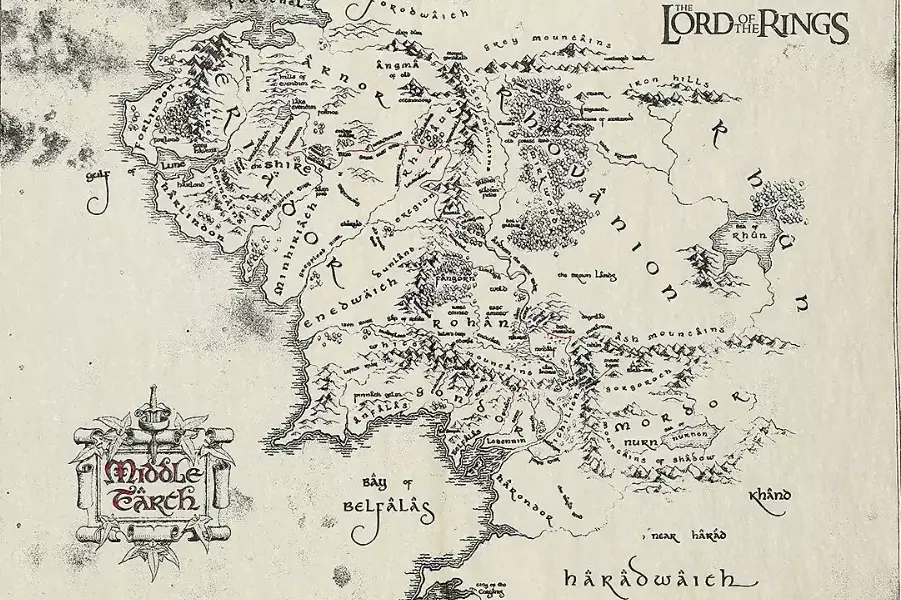LOTR, The Fourth Age; After Sauron
Christian Byrd
0 Comments
fantasy, history of middle earth part 5, Lore, lotr, the fourth age 5 min read
The Fourth Age of Middle-earth begins after the destruction of the One Ring and the downfall of Sauron. It is known as the Age of Men, marking the end of the dominance of Elves, Dwarves, and other ancient beings. While Tolkien did not write extensively about this period, we have clues from the appendices of The Lord of the Rings and other writings that describe the transition to a new era of peace, renewal, and fading magic.
The Fourth Age is both a beginning and an end—the dawn of a new era for the people of Middle-earth, yet also the twilight of the ancient world that had endured for millennia. As magic fades and Men take center stage, the world of The Lord of the Rings slowly becomes more like the world we know today, a place where the grand myths of the past linger in memory.
Key Themes of the Fourth Age
- The Rise of Men: The Fourth Age is characterized by the ascendancy of Men, particularly under the reign of Aragorn Elessar, the High King of the Reunited Kingdom.
- The Departure of the Elves: With the destruction of the One Ring, many Elves leave Middle-earth for the Undying Lands, leaving Men to govern the world.
- The Decline of the Dwarves: Dwarves continue their ancient craft, but their influence wanes as their numbers diminish.
- The End of Magic: As Elves and Maiar leave the world, the magical elements that once defined Middle-earth fade, bringing a more “mortal” reality.
Timeline and Events of the Fourth Age
TA 3021 / FA 1:
- The Fourth Age officially begins with the departure of Frodo, Gandalf, Bilbo, Galadriel, and Elrond to the Undying Lands.
- Aragorn Elessar is crowned King of the Reunited Kingdom of Gondor and Arnor, marrying Arwen, the daughter of Elrond, uniting the line of Elves and Men.
FA 1–120: The Reign of King Aragorn Elessar
- Aragorn’s Reign marks a golden age of peace and prosperity. He reunites Gondor and Arnor and extends the borders of the kingdom.
- Minas Tirith becomes the capital, and the White Tree of Gondor blooms again, symbolizing the renewal of hope.
- Rohan, under Éomer, also enters a time of peace, becoming a close ally of Gondor.
- Aragorn renews alliances with the northern Dúnedain and establishes peace with the Haradrim and Easterlings, former enemies of Gondor.
- The Shire is officially declared off-limits to all outsiders by a royal decree from Aragorn. Hobbits remain isolated but enjoy peace and prosperity under the leadership of Samwise Gamgee, Meriadoc Brandybuck, and Peregrin Took.
FA 61: The Death of Arwen Undómiel
- Aragorn dies at the age of 210 after ruling for 120 years, willingly relinquishing his life in the tradition of the Númenóreans.
- Arwen, overwhelmed by grief, retreats to Lothlórien, where she dies alone, marking the symbolic end of the Elven age.
The Decline of the Elves
- As the Fourth Age progresses, most remaining Elves leave Middle-earth, sailing west to the Undying Lands.
- Legolas, after Aragorn’s death, builds a ship and sails into the West, accompanied by Gimli, marking one of the last known departures of an Elf and a Dwarf from Middle-earth.
- Rivendell and Lothlórien are abandoned, and the influence of Elves dwindles completely.
The Dwarves in the Fourth Age
- Gimli, leading some of Durin’s Folk, establishes a Dwarven colony in Aglarond (the Glittering Caves of Helm’s Deep).
- The Dwarves of Erebor (the Lonely Mountain) continue their craft, and it is said that a new Durin is born to lead them.
- However, as the age progresses, the numbers of the Dwarves continue to dwindle, and they become a rare and reclusive people.
The End of the Shadow
- With the destruction of Sauron, the great shadow that loomed over Middle-earth for centuries is lifted. The remnants of Sauron’s forces—Orcs, Trolls, and other creatures of darkness—are hunted down or retreat into the farthest corners of the world.
- Mordor is left uninhabited and desolate, though its land remains a dark reminder of the past.
The Rise of the Reunited Kingdom and the Dominion of Men
- The Fourth Age is dominated by the Reunited Kingdom of Gondor and Arnor, now ruled by the descendants of Aragorn and Arwen.
- Eldarion, the son of Aragorn and Arwen, inherits the throne and continues the work of his father, maintaining peace and order in the realm.
- Men of other regions, including the Haradrim and Easterlings, who were once enemies, gradually come under the influence of the Reunited Kingdom.
Themes and Symbolism of the Fourth Age
- The Passing of the Old World: The Fourth Age marks the end of many ancient things—Elves, Dwarves, and the remnants of magic. These beings either leave Middle-earth or diminish, paving the way for Men to take full control of the world.
- Hope and Renewal: The rise of the Reunited Kingdom and the reign of Aragorn and his descendants symbolize the restoration of hope after the darkness of the Third Age.
- The Beginning of a Mortal Age: With the departure of Elves and the fading of the Maiar (such as Gandalf), the world becomes more mundane and mortal. Magic diminishes, and the extraordinary beings of earlier ages become mere legends.
The Legacy of the Fourth Age
Tolkien intentionally left the Fourth Age shrouded in mystery, as it represents a transition from myth and legend into history. The events of the Fourth Age symbolize the passing of the fantastic into memory, echoing Tolkien’s idea that the great tales of the past become myths in the present day.- The world of the Fourth Age resembles a more “human” world, where the actions of Men determine the future without the aid of divine or supernatural forces.
- Middle-earth becomes a place that will eventually fade into our world, as the extraordinary creatures and events become stories and legends passed down through time.
The Fourth Age is both a beginning and an end—the dawn of a new era for the people of Middle-earth, yet also the twilight of the ancient world that had endured for millennia. As magic fades and Men take center stage, the world of The Lord of the Rings slowly becomes more like the world we know today, a place where the grand myths of the past linger in memory.
Author
-

I'm a freelancer writer for Heroic Clash. I've also written for CBR, MovieSource, and Inquistr
View all posts

